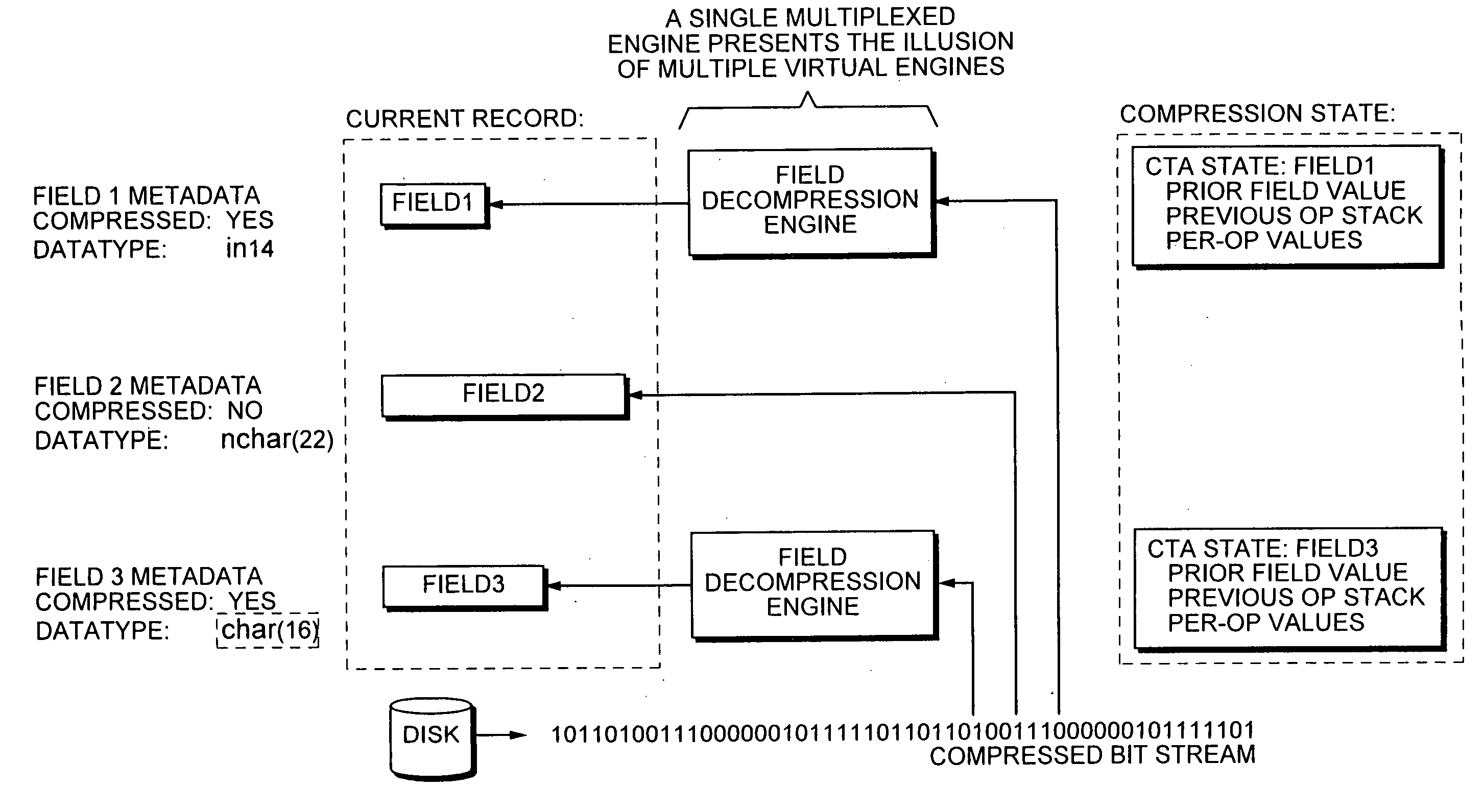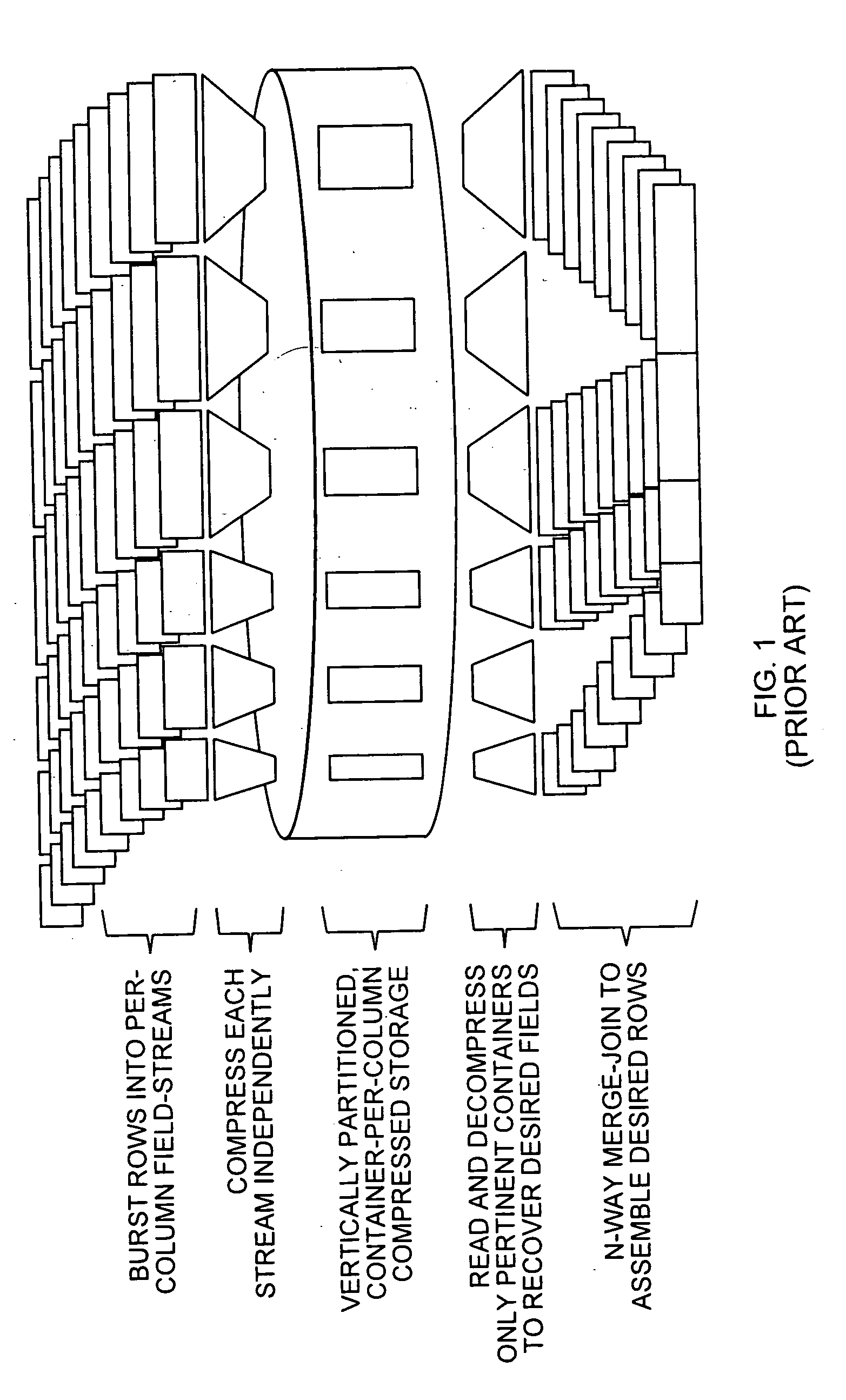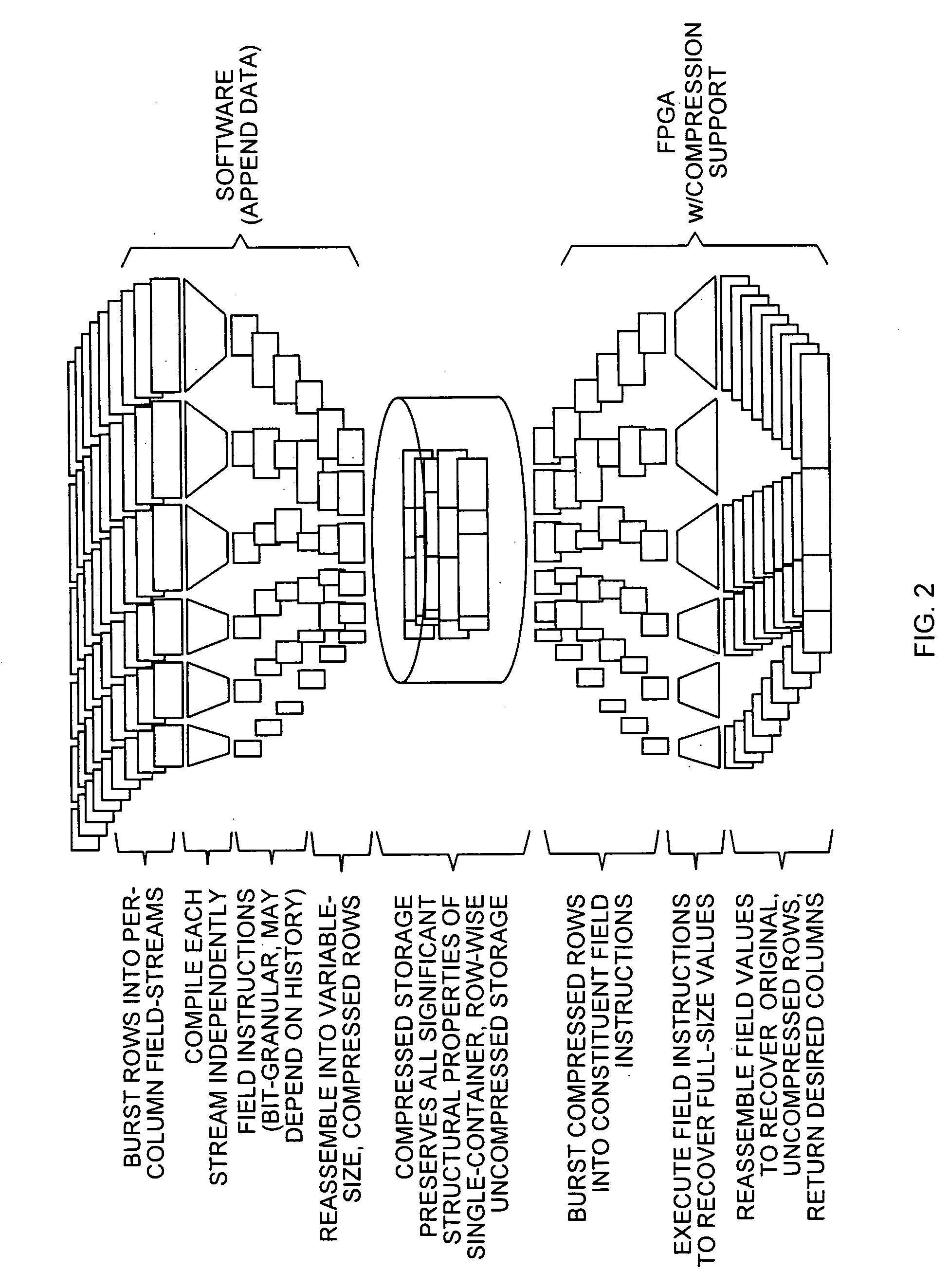Technique for compressing columns of data
- Summary
- Abstract
- Description
- Claims
- Application Information
AI Technical Summary
Benefits of technology
Problems solved by technology
Method used
Image
Examples
Embodiment Construction
2.0. Preferred Embodiment
2.1 System Architecture
[0041]The invention's preferred implementation can be in a parallel relational database system 100 as shown in FIG. 3, where embedded processors 150, acting as intelligent disks, communicate through a hierarchical communications fabric 130 to one or more processors 110 (called the ‘hosts’) at the root of the communications hierarchy.
[0042]Each of the embedded processors (also called ‘Snippet Processing Units’ or ‘SPUs’ herein) 150 consists of a one or more mass storage devices such as magnetic disk drives 160, a communications fabric interface 151, a micro controller (MC) 152 serving as a central processing unit (CPU), random access (RAM) memory 153, and other circuitry required to connect these elements, provide electrical power, and the like.
2.2. Component Detail
[0043]As more particularly shown in FIG. 3, a typical host may consist of one or more individual SMP “host” computers 110, each with its own memory 127, network interface 120...
PUM
 Login to View More
Login to View More Abstract
Description
Claims
Application Information
 Login to View More
Login to View More - R&D
- Intellectual Property
- Life Sciences
- Materials
- Tech Scout
- Unparalleled Data Quality
- Higher Quality Content
- 60% Fewer Hallucinations
Browse by: Latest US Patents, China's latest patents, Technical Efficacy Thesaurus, Application Domain, Technology Topic, Popular Technical Reports.
© 2025 PatSnap. All rights reserved.Legal|Privacy policy|Modern Slavery Act Transparency Statement|Sitemap|About US| Contact US: help@patsnap.com



